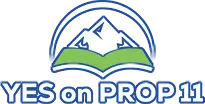Questions & Answers

Alpine School District voted this year to increase taxes, and more tax increases are on the horizon. Currently, our communities are contributing the greatest portion of taxes, but other areas are receiving more of the benefits of those tax revenues.
A new school district would allow us to contribute more of our taxes to our community schools and avoid costly tax increases in the future.
Utah has a very equalized structure for funding schools. While the Central District may have a higher basic property tax value, it will then be reduced by the amount of state funding that the Central District receives. The financial analysis indicates there won’t be a real significant difference especially over a handful of years.
Most likely this will be handled by interlocal agreements between the three districts. The same services will be able to be distributed in a similar fashion to what is occurring now.
Due to the size and the various needs of Alpine School District, bonds are targeted for the most pressing needs, whether to build new schools in the west or to refurbish very old buildings in the south. While the school boards try to balance the bond funds throughout the district, the reality is that the West and the South have higher needs than the Central area.
So, for example, at one point Highland residents were paying approximately 9% of the total property taxes collected by ASD. At the same point, Highland schools received less than 1% of total bond project funding. Having a more locally focused school board will allow for whatever bond funds that are allocated to be more focused on the specific needs of the Central District area.
By the same token, the West District will be able to take all of the funds their residents choose to spend on bonding and focus them entirely on new building, if they choose. They will be able to meet their needs more effectively and in a more timely manner for probably close to the same or similar amount of funding. The accountability for property taxes will be far greater when the residents can see direct benefit from their tax increases.
The new school district would be the 6th largest in Utah, and larger than 99% of districts nationwide. Multiple feasibility studies have demonstrated that a new district is not only viable, but thrivable.
Lehi has the largest tax base of any city in Alpine School District. Add to that American Fork, Highland, Alpine, and Cedar Hills, and that would be a very strong tax base for any district.
Utah uses income tax and the basic property tax levies for equalizing educational needs throughout the state. This is the state money that, based on what amount your property taxes generate, the state will kick in to help fund most everything equally. This is the correct method.
Property taxes via bonding are focused specifically on capital projects aka buildings and real estate primarily. These are done via property tax because if you live in a given area, then you have the right and the responsibility to pay directly for those things that you want in that area. For example, if the city asks for increased taxes for Police and Fire, those increases should go to your local Police and Fire and not to fund those in San Juan County.
The biggest benefit in funding for a district split is in meeting the specialized needs in each area and the resulting accountability that comes with it.
The county will be responsible for creating the different boundaries for each new school board member areas. There are specific requirements in state code for making them mostly equal in population etc.
At one point Orem had 3 representatives on the ASD board. With a new census and redistricting, Lehi picked up one of those 3 and Orem went down to 2. A similar process will occur with every new district. Since this is done by population, it will be a function of population. Lehi would have to have a population greater than all the other cities’ populations to take control of a 7 member school board.
The cost per student of a new superintendent and school board will increase, but based on the overall budget, this is negligible. If it were only about cost and not about local control and representation, then we should just have the State School board run all our schools completely.
As for the administrative staff, if you are not overseeing as many students and employees, you need fewer middle managers. Based on the administrators that we currently have in ASD, they could be distributed over the three districts without increasing the number of positions.

